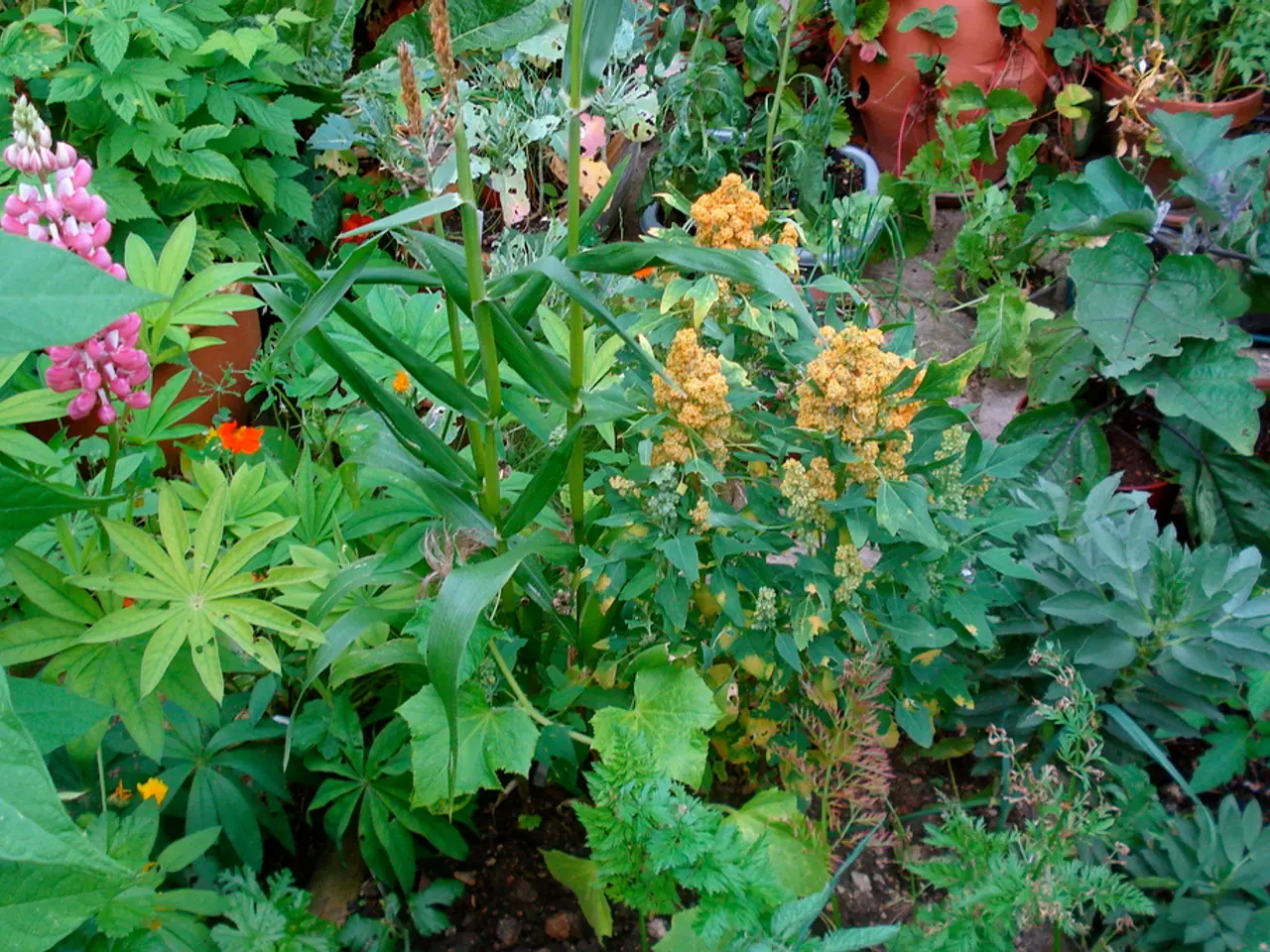Readying Your Garden for Winter's Chill and Freezing Conditions
Preparing Your Grow Bag Garden for Winter: Essential Tips and Guidelines
As the chill of winter approaches, it's crucial to ensure that your grow bag garden stays healthy and thriving. Proper preparation can protect your plants, promote growth, and guarantee a verdant spring garden. Here's an extensive guide on the key steps to ready your grow bag garden for the cold months ahead.
Before winter sets in, begin with a thorough garden cleanup. Clearing away dead or diseased plant materials is not only visually appealing but also vital for the health of your garden. Remove leaves and debris as they can serve as breeding grounds for pests and diseases that may harm your garden during winter. Prune back dead or overgrown branches, and trim back perennials to just a few inches above the ground. A clean garden bed reduces potential hiding places for pests and pathogens, setting the stage for a stronger garden in the springtime.
For grow bags housing herbs and seasonal vegetables, take note of the perennial and annual herbs. Perennial herbs like rosemary and thyme can be kept outside, while herbs such as basil and cilantro will not survive the cold. Before winter arrives, ensure to harvest and enjoy these annual herbs. Trimming back overgrown herbs will encourage healthy growth in the next growing season. Move your grow bags to a sheltered location like a covered patio or porch, if possible, to protect them from severe winter winds, frost, and freezing temperatures. Wrapping the grow bags in burlap, bubble wrap, or similar insulating materials can help keep the soil from freezing too. Remember to reduce the frequency of watering, as herbs experience slower growth and require less water during winter. Moreover, position your grow bags in a spot that receives as much sunlight as possible during these months.
To protect perennial plants and tender plants from freezing temperatures, apply a layer of organic mulch, like straw or wood chips, around the base of the plants. Mulch serves as an insulator, maintaining consistent soil temperature and minimizing frost damage risk. For added protection, consider covering these plants with frost cloth, burlap, or a similar barrier against the cold and harsh winter winds.
In cold weather, potted plants may not hold up as well. Bringing these plants indoors, placing them near a sunny windowsill, or utilizing a greenhouse can provide an optimal winter habitat. In low-light conditions, reduce watering and allow the soil to dry out slightly between waterings. Potted plants left outdoors should be insulated and protected against freezing temperatures. Wrapping the pots in bubble wrap, burlap, or even old blankets can offer protection against extreme cold and prevent temperature fluctuations. Additionally, using plant blankets or fleece covers can add an extra layer of warmth for container plants during harsh winter weather.
Trees are critical to your garden's ecosystem but require special care during the winter months. Wrap younger trees' trunks in tree wrap or burlap to prevent sunscald and frost cracks. Sunscald occurs when winter sun exceedingly heats up the tree trunk, potentially causing damage when temperatures suddenly drop. As for fruit trees, prune them during late winter to maintain their shape and health, fostering a more bountiful harvest the following year.
Appropriately maintaining your gardening tools is equally important. Clean and oil your tools before storing them for the winter, ensuring they remain in good condition for spring. Sharpen pruners and shears for efficient use, safety, and longevity.
While prepping your garden for winter, don't forget to plan for the future. Make a garden journal or map to outline the layout of your garden and make a list of the plants you'd like to add or translocate in the spring. Consider starting seeds indoors to give your garden a head start as soon as the weather warms up. Moreover, take note of any desired garden improvements or additions, such as raised beds, new features, or reconfiguring garden paths.
Caring for your garden during winter is crucial for its longevity, resilience, and springtime vitality. Properly tending to your plants and trees enhances their ability to withstand cold temperatures, leading to a more vibrant and flourishing garden in the coming months. With appropriate preparation, your grow bag garden will endure the winter's chill, ready to burst with life as soon as the first signs of spring appear.
- To safeguard your grow bag garden from the winter cold, move the grow bags housing herbs and seasonal vegetables to a sheltered location like a covered patio or porch, if possible, and wrap them in burlap, bubble wrap, or similar insulating materials to protect them from severe winds, frost, and freezing temperatures.
- In the fall, begin to prepare your home-and-garden lifestyle for the winter season by creating a garden journal or map to plan the layout of your grow bag garden for the upcoming spring. This will help you remember the plants you'd like to add, translocate, or start seeds indoors to give your garden a head start as soon as the weather warms up.








